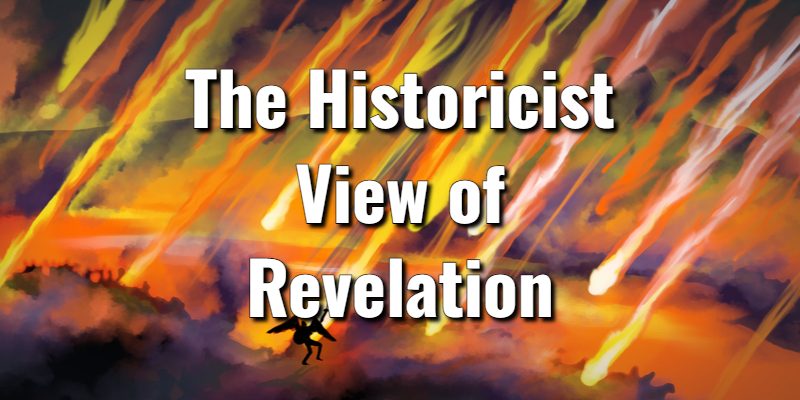Historicism contends that the prophetic visions of Revelation unfold chronologically over the course of Christian history, offering a unique lens through which to understand the book. In this article, we will explore the Historicist interpretation of Revelation, citing key verses from the King James Bible to support this viewpoint. The Historicist Perspective: Historicism, as applied to the Book of Revelation, posits that the events and symbols described in the book represent a sequential unfolding of historical events, spanning from the time of the apostles to the end of the world. This interpretation emerged during the Reformation and was popular among Protestant reformers, who often saw the events and figures in Revelation as allegorically linked to historical events and individuals. Representing one of the most common of the different views, Christians who subscribe to the Historicist view of Revelation often cite the below Bible verses.
The Historicist View of Revelation
Historicist View of Revelation: Key Bible Verses
Key Bible verses:
- Revelation 2:1-3: “Unto the angel of the church of Ephesus write; These things saith he that holdeth the seven stars in his right hand, who walketh in the midst of the seven golden candlesticks; I know thy works, and thy labour, and thy patience, and how thou canst not bear them which are evil: and thou hast tried them which say they are apostles, and are not, and hast found them liars: And hast borne, and hast patience, and for my name’s sake hast laboured, and hast not fainted.”
Historicists commonly interpret the seven churches mentioned in Revelation 2-3 as representing different periods in church history. The church of Ephesus, for example, may symbolize the early apostolic age, and the loss of “first love” could signify a decline in the church’s purity.
- Revelation 12:6: “And the woman fled into the wilderness, where she hath a place prepared of God, that they should feed her there a thousand two hundred and threescore days.”
Historicists often view this passage as a representation of the 1,260 years of persecution faced by the true church during the Middle Ages, often associated with the rise of the Roman Catholic Church’s power.
The imagery of a beast rising from the sea with ten horns and seven heads is often interpreted historically, with the heads and horns representing different empires or kingdoms throughout history.
- Revelation 17:9-10: “And here is the mind which hath wisdom. The seven heads are seven mountains, on which the woman sitteth. And there are seven kings: five are fallen, and one is, and the other is not yet come; and when he cometh, he must continue a short space.”
Historicists may link these seven heads and kings to various historical rulers and kingdoms, often including the Roman Empire in the interpretation.
- Revelation 19:11-16: “And I saw heaven opened, and behold a white horse; and he that sat upon him was called Faithful and True, and in righteousness he doth judge and make war. His eyes were as a flame of fire, and on his head were many crowns; and he had a name written, that no man knew, but he himself. And he was clothed with a vesture dipped in blood: and his name is called The Word of God. And the armies which were in heaven followed him upon white horses, clothed in fine linen, white and clean. And out of his mouth goeth a sharp sword, that with it he should smite the nations: and he shall rule them with a rod of iron: and he treadeth the winepress of the fierceness and wrath of Almighty God. And he hath on his vesture and on his thigh a name written, KING OF KINGS, AND LORD OF LORDS.”
The return of Jesus Christ as the conquering rider on a white horse is seen by Historicists as the culmination of history and the establishment of Christ’s eternal kingdom.
Lord's Library is a Christian resource hub. Our editors use a variety of internet research methods like search engines, audio and video, AI, consultations with ministry leaders in the field, and more. Lord's Library should never be a substitute for reading your Bible daily as the Scriptures are to be our final authority on all matters. Lord's Library participates in affiliate programs. We may make a small commission from products purchased through this resource.
- What Does the Bible Say About Discernment? With Key Scriptures - July 19, 2024
- What Does the Bible Say About Disobedience? With Key Scriptures - July 19, 2024
- 1 Timothy 1:12 Meaning: Commentary on an Important Scripture - July 11, 2024













